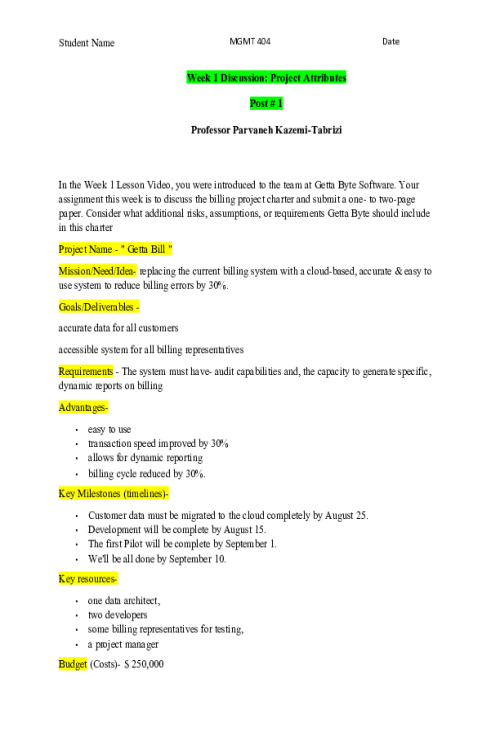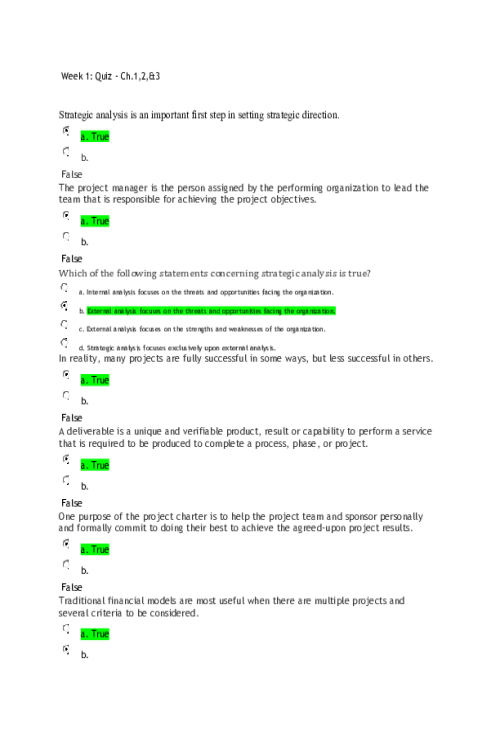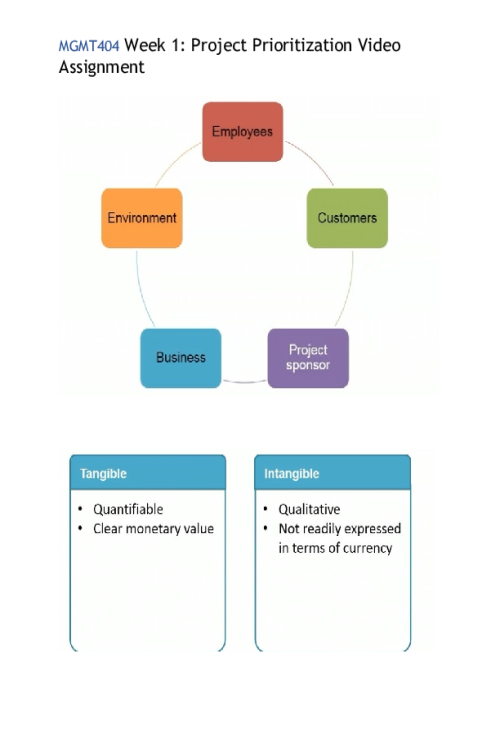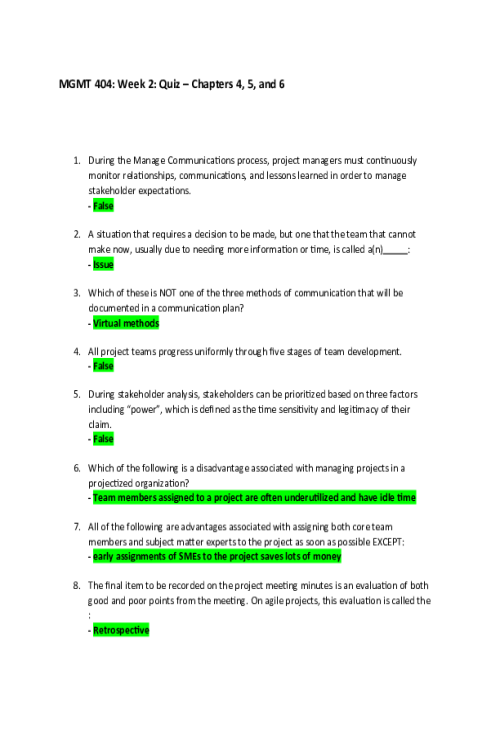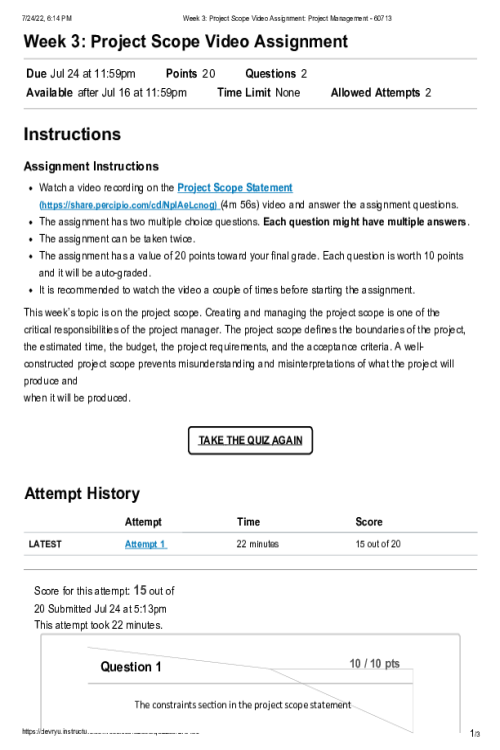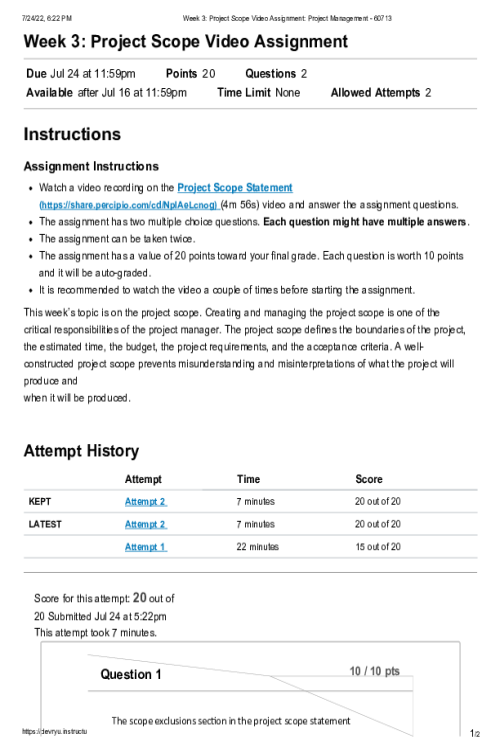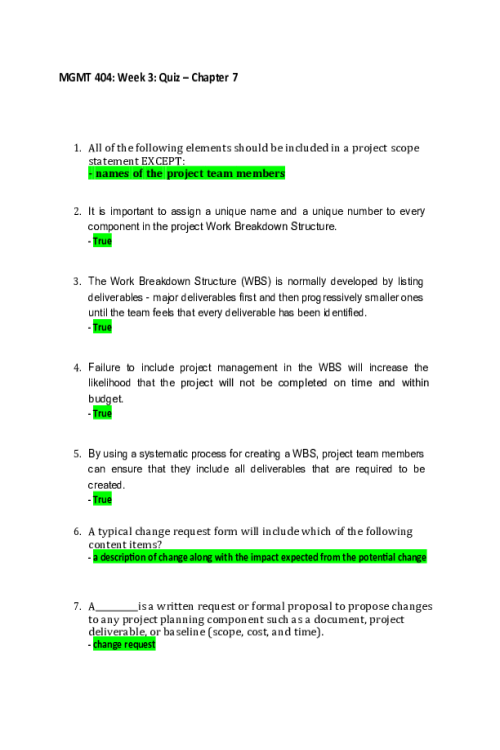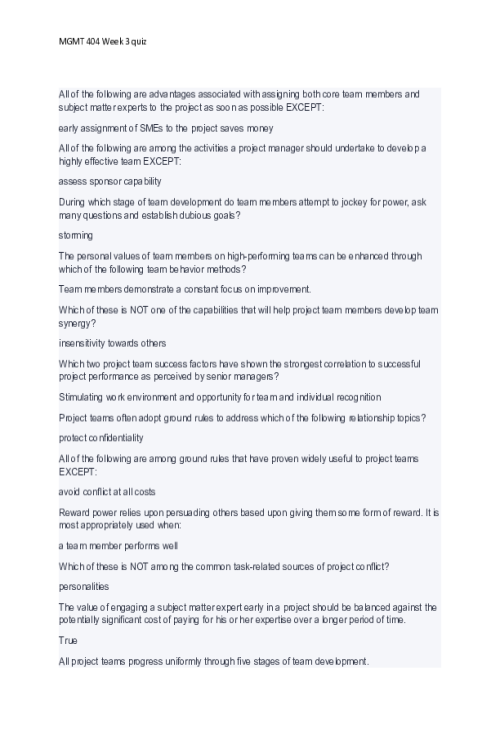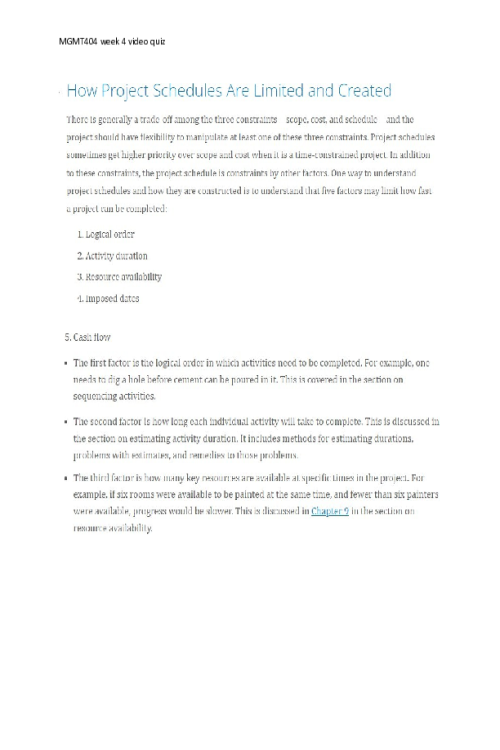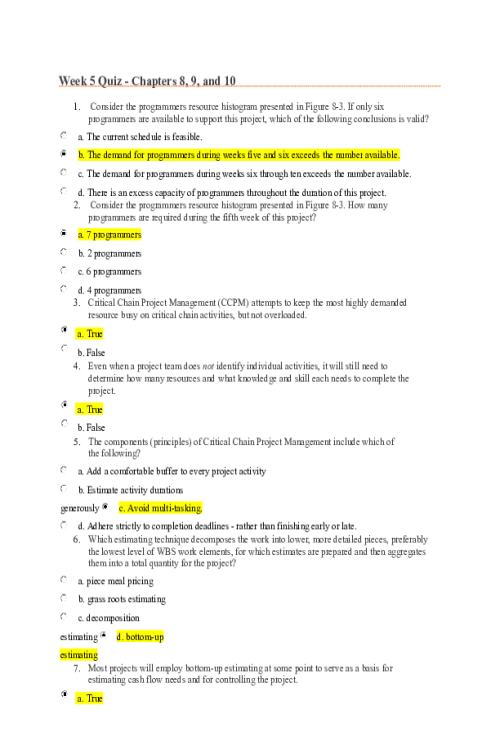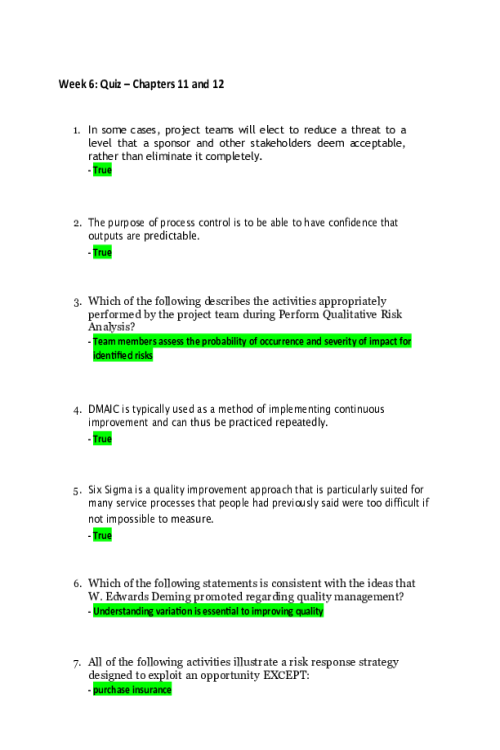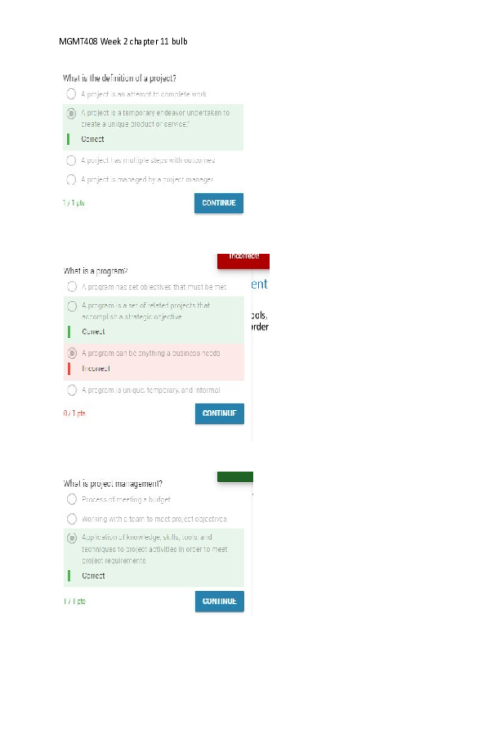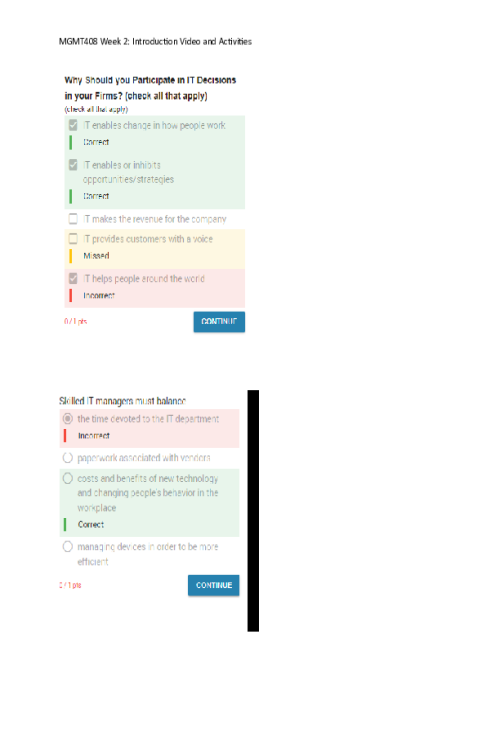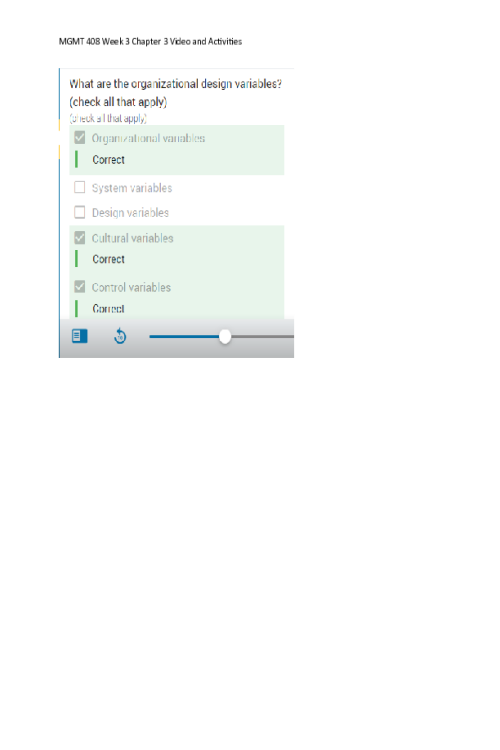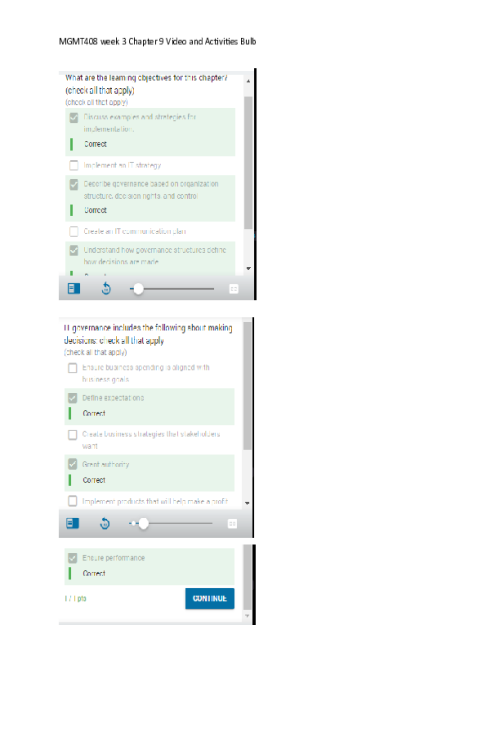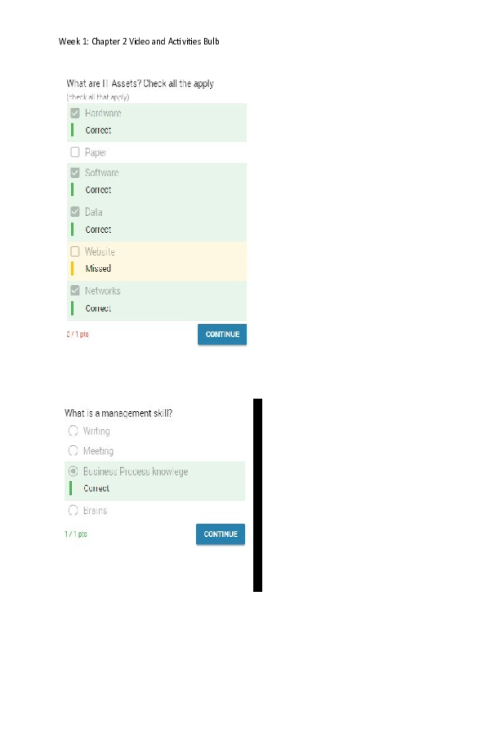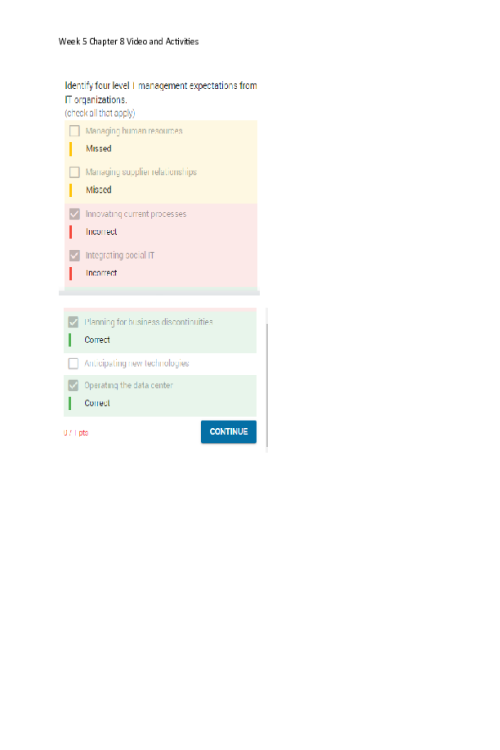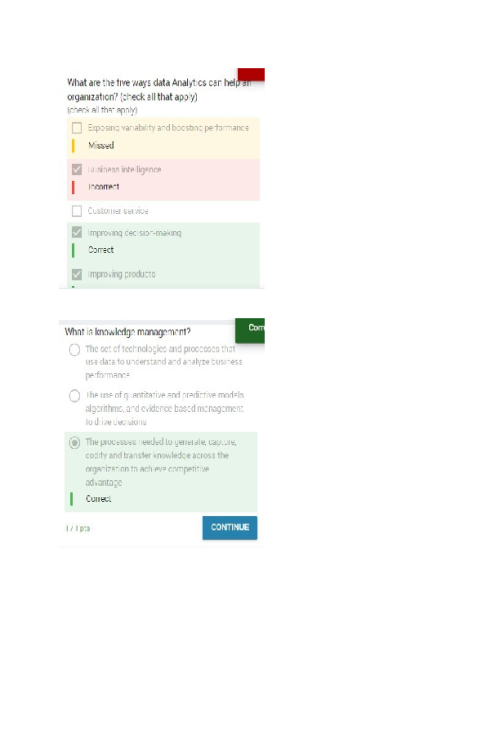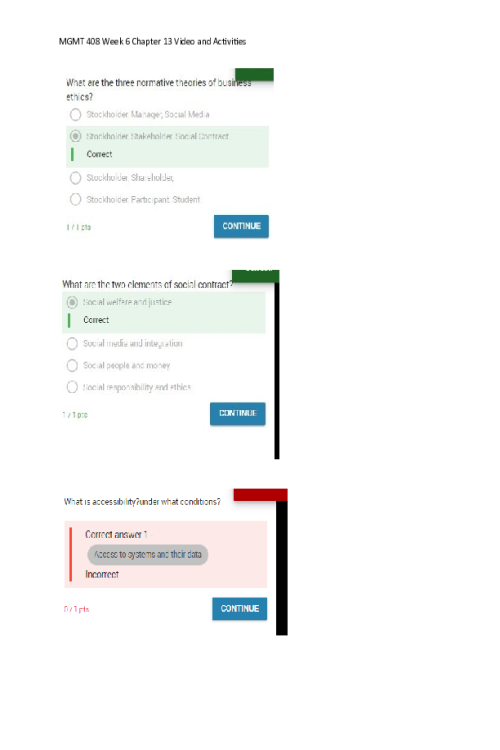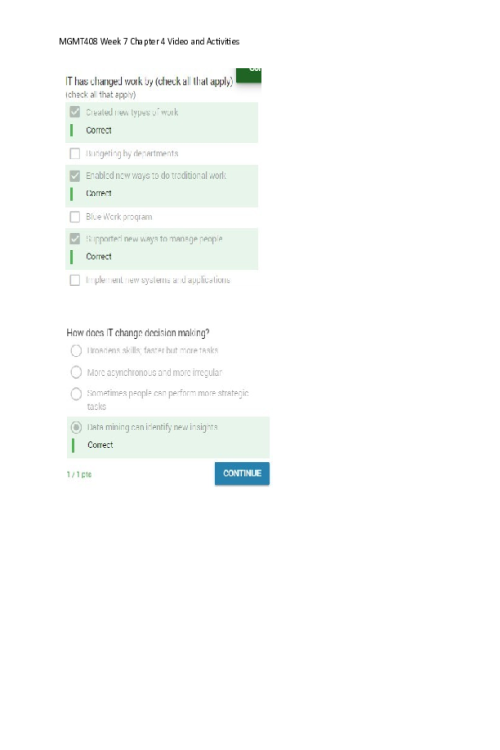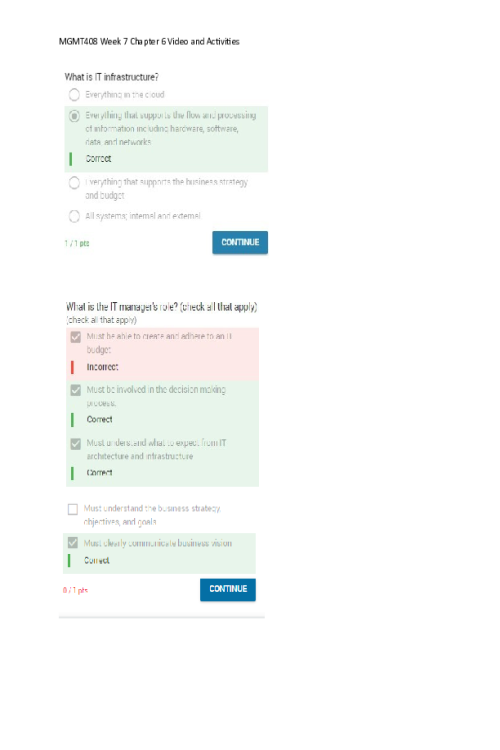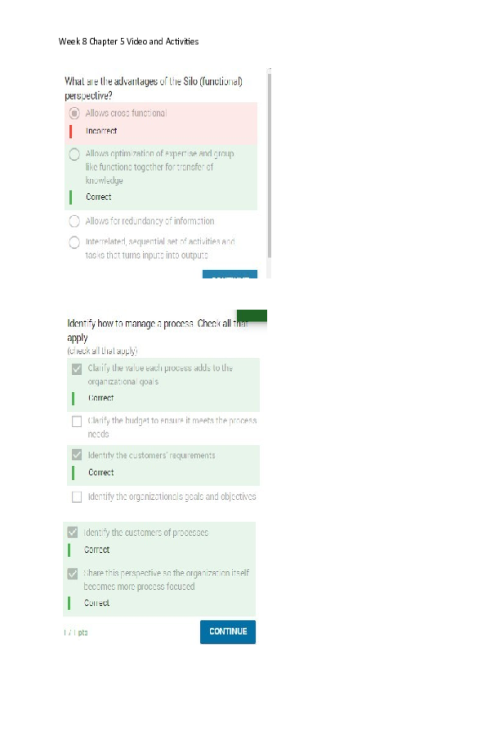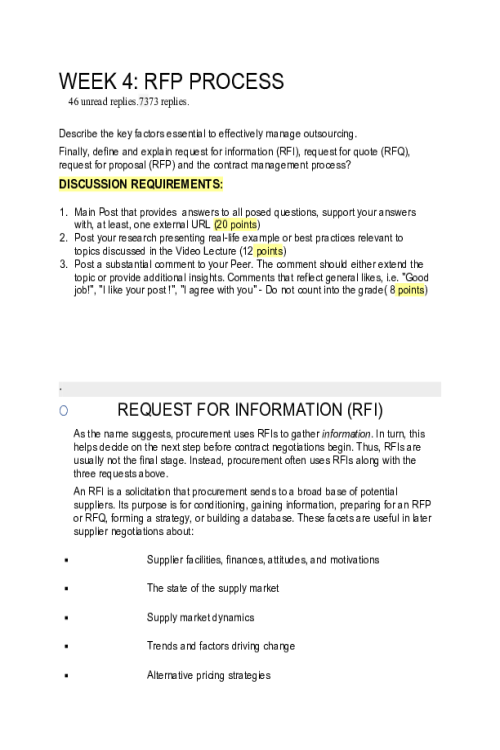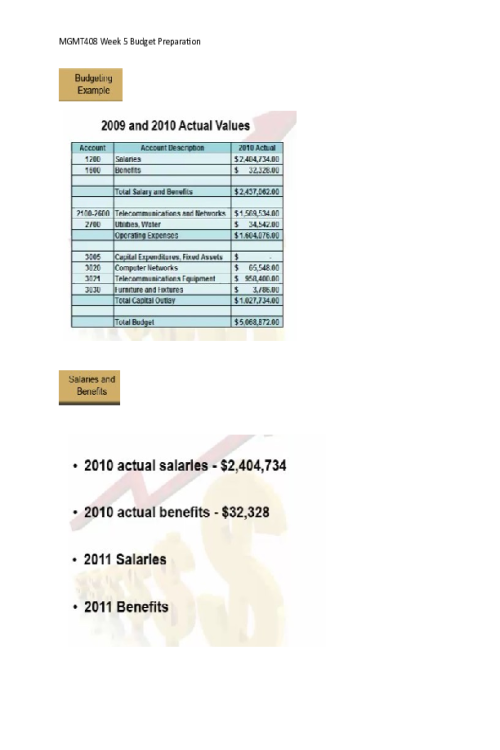MGMT 404 Week 1 Project Management Book of Knowledge
Section 2: The Environment in Which Projects Operate OVERVIEW Projects exist and operate in environments that may have an influence on them. These influences can have a favorable or unfavorable impact on the project. Two major categories of influences are enterprise environmental factors (EEFs) and organizational process assets (OPAs). EEFs originate from the environment outside of the project and often outside of the enterprise. EEFs may have an impact at the organizational, portfolio, program, or project level. See Sectionfor additional information on EEFs. OPAs are internal to the organization. These may arise from the organization itself, a portfolio, a program, another project, or a combination of these. Figure 2-1 shows the breakdown of project influences into EEFs and OPAs. See Section 2.3 for additional information on OPAs. 914400172489 In addition to EEFs and OPAs, organizational systems play a significant role in the life cycle of the project. System factors that impact the power, influence, interests, competencies, and political capabilities of the people to act within the organizational system are discussed further in the section on organizational systems (see Section 2.4). DEVELOP PROJECT CHARTER Develop Project Charter is the process of developing a document that formally authorizes the existence of a project and provides the project manager with the authority to apply organizational resources to project activities. The key benefits of this process are that it provides a direct link between the project and the strategic objectives of the organization, creates a formal record of the project, and shows the organizational commitment to the project. This process is performed once or at predefined points in the project. The inputs, tools and techniques, and outputs of the process are depicted in Figure 4-2. Figure 4-3 depicts the data flow diagram for the process. 914400178445 The project charter establishes a partnership between the performing and requesting organizations. In the case of external projects, a formal contract is typically the preferred way to establish an agreement. A project charter may still be used to establish internal agreements within an organization to ensure proper delivery under the contract. The approved project charter formally initiates the project. A project manager is identified and assigned as early in the project as is feasible, preferably while the project charter is being developed and always prior to the start of planning. The project charter can be developed by the sponsor or the project manager in collaboration with the initiating entity. This collaboration allows the project manager to have a better understanding of the project purpose, objectives, and expected benefits. This understanding will better allow for efficient resource allocation to project activities. The project charter provides the project manager with the authority to plan, execute, and control the project. Projects are initiated by an entity external to the project such as a sponsor, program, or project management office (PMO), or a portfolio governing body chairperson or authorized representative. The project initiator or sponsor should be at a level that is appropriate to procure funding and commit resources to the project. Projects are initiated due to internal business needs or external influences. These needs or influences often trigger the creation of a needs analysis, feasibility study, business case, or description of the situation that the project will address. Chartering a project validates alignment of the project to the strategy and ongoing work of the organization. A project charter is not considered to be a contract because there is no consideration or money promised or exchanged in its creation. DEVELOP PROJECT CHARTER: INPUTS BUSINESS DOCUMENTS The business case (described in Section 1.2.6.1) and the benefits management plan (described in Section 1.2.6.2) are sources of information about the project´s objectives and how the project will contribute to the business goals. Although the business documents are developed prior to the project, they are reviewed periodically. Business case. The approved business case, or similar, is the business document most commonly used to create the project charter. The business case describes the necessary information from a business standpoint to determine whether the expected outcomes of the project justify the required investment. It is commonly used for decision making by managers or executives above the project level. Typically, the business need and the cost- benefit analysis are contained in the business case to justify and establish boundaries for the project. For more information on the business case, see Section 1.2.6.1. The business case is created as a result of one or more of the following: Market demand (e.g., an automobile manufacturer authorizing a project to build more fuel-efficient cars in response to gasoline shortages), Organizational need (e.g., due to high overhead costs, a company may combine staff functions and streamline processes to reduce costs), Customer request (e.g., an electric utility authorizing a project to build a new substation to serve a new industrial park), Technological advance (e.g., an airline authorizing a new project to develop electronic tickets instead of paper tickets based on technological advances), Legal requirement (e.g., a paint manufacturer authorizing a project to establish guidelines for handling toxic materials), Ecological impacts (e.g., a company authorizing a project to lessen its environmental impact), or Social need (e.g., a nongovernmental organization in a developing country authorizing a project to provide potable water systems, latrines, and sanitation education to communities suffering from high rates of cholera). The project charter incorporates the appropriate information for the project from the business documents. The project manager does not update or modify the business documents since they are not project documents; however, the project manager may make recommendations. AGREEMENTS Described in Section 12.2.3.2. Agreements are used to define initial intentions for a project. Agreements may take the form of contracts, memorandums of understanding (MOUs), service level agreements (SLA), letters of agreement, letters of intent, verbal agreements, email, or other written agreements. Typically, a contract is used when a project is being performed for an external customer. ENTERPRISE ENVIRONMENTAL FACTORS The enterprise environmental factors that can influence the Develop Project Charter process include but are not limited to: Government or industry standards (e.g., product standards, quality standards, safety standards, and workmanship standards), Legal and regulatory requirements and/or constraints, Marketplace conditions, Organizational culture and political climate, Organizational governance framework (a structured way to provide control, direction, and coordination through people, policies, and processes to meet organizational strategic and operational goals), and Stakeholders’ expectations and risk thresholds. ORGANIZATIONAL PROCESS ASSETS The organizational process assets that can influence the Develop Project Charter process include but are not limited to: Organizational standard policies, processes, and procedures; Portfolio, program, and project governance framework (governance functions and processes to provide guidance and decision making); Monitoring and reporting methods; Templates (e.g., project charter template); and Historical information and lessons learned repository (e.g., project records and documents, information about the results of previous project selection decisions, and information about previous project performance). DEVELOP PROJECT CHARTER: TOOLS AND TECHNIQUES EXPERT JUDGMENT Expert judgment is defined as judgment provided based upon expertise in an applic
Related Products
MGMT 404 Complete Course Project; The Getta Byte - New Billing System Project
Contributor: Addison
$30
Related Products
MGMT 404 Week 6 Course Project Part 3 (Sections E and F) - Getta Byte Software Project...
Contributor: Addison
$10
MGMT 404 Week 4 Course Project Part 2 (Sections C and D) - Getta Byte Software Project
Contributor: Addison
$10
MGMT 404 Week 8 COURSE PROJECT; The Getta Byte - New Billing System Project
Contributor: Addison
$20
MGMT 408 Week 3 PART 1-A; Find Examples of RFPs IT Related - Due Week 3
Contributor: Georgina Sparks
$25
MGMT 408 Week 2 Case Study Assignment; Traffic Jam in London Case Study
Contributor: Georgina Sparks
$20
MGMT 408 Week 7 PART 2-A Course Project; Request for Proposal Template - Call Center Hardware Upgrade
Contributor: Georgina Sparks
$25
MGMT 408 Week 7 PART 2-A; Create an RFP Solicitation - IT Related - Due Week 7
Contributor: Georgina Sparks
$25
MGMT 408 Week 8 PART 2-B RFP Solicitation PowerPoint Presentation - Due Week 8
Contributor: Georgina Sparks
$25
MGMT 408 Week 4 PART 1-B Analyze RFP Solicitations - IT Related - Due Week 4
Contributor: Georgina Sparks
$25


